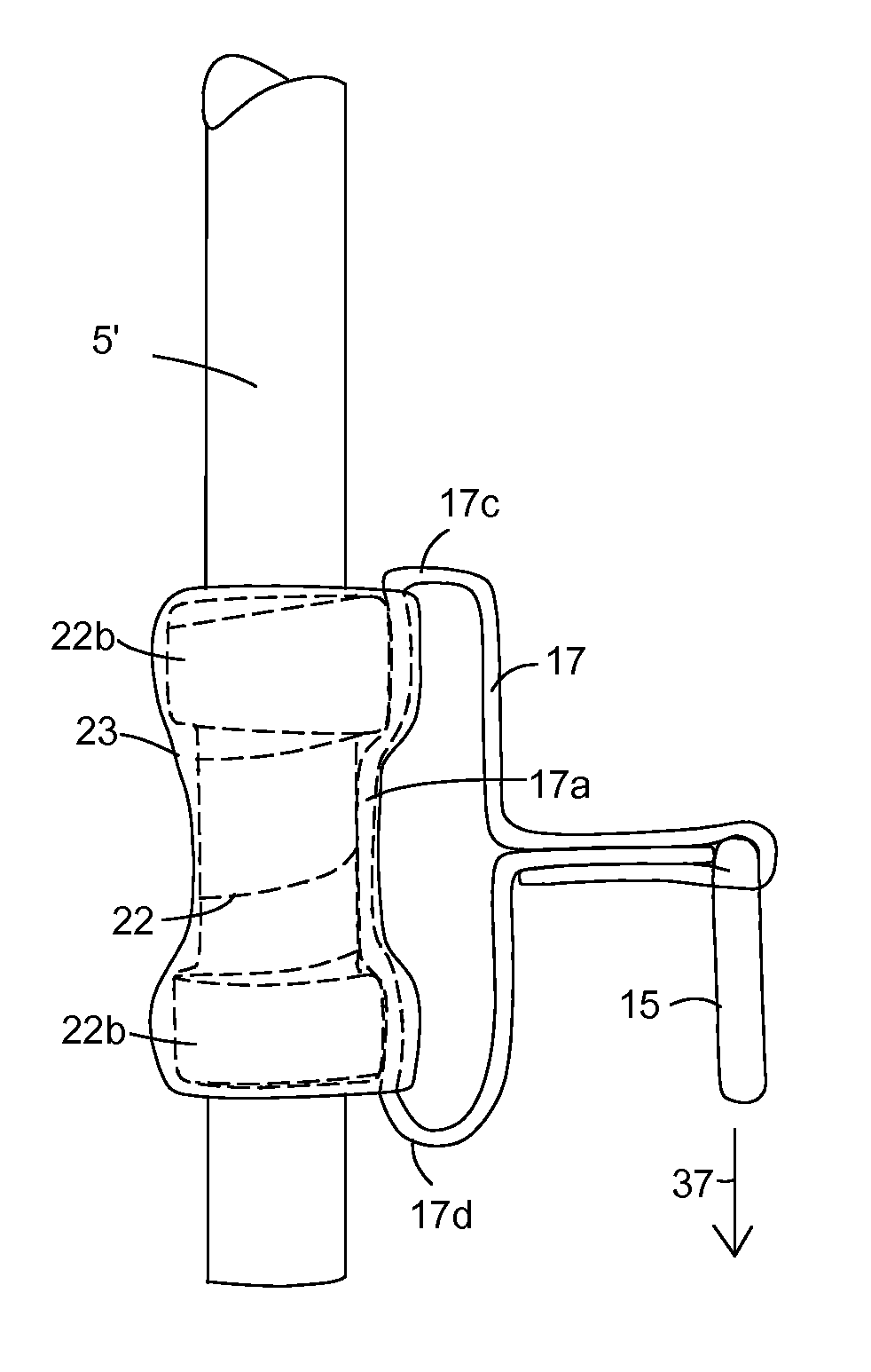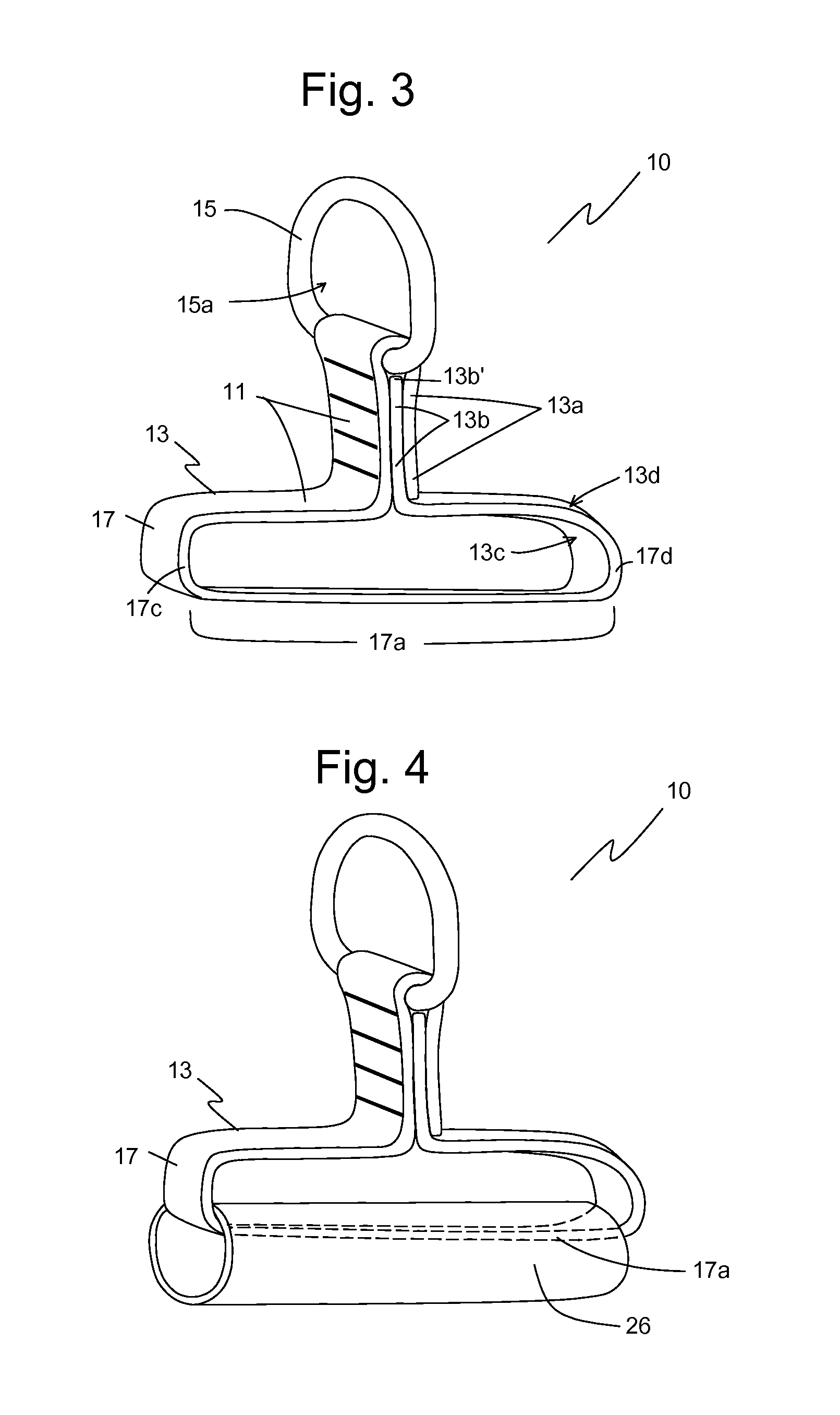Method of tethering a tool
- Summary
- Abstract
- Description
- Claims
- Application Information
AI Technical Summary
Benefits of technology
Problems solved by technology
Method used
Image
Examples
Embodiment Construction
[0055]Embodiments of the present invention are illustrated in FIGS. 1-29. FIG. 1 illustrates a front perspective view of one embodiment of a connector strap 10 secured to a connector 15 suitable for attaching a tether (not shown). In the embodiment of FIG. 1, connector strap 10 includes a length of webbing 13 with a first end portion 13a, a second end portion 13b, a front surface 13c, and a back surface 13d. In one embodiment, first end portion 13a defines a first catch 12 and second end portion 13b defines a second catch 14, where body portion 11 is between first catch 12 and second catch 14.
[0056]In one embodiment, connector 15 defines a closed-loop and connector 15 is secured to webbing 13 by looping first end portion 13a through the closed-loop and securing first end portion 13a to body portion 11, such as by stitching, fasteners, adhesive or other means. Also, by attaching first end portion 13a to webbing 13 in this manner, first end portion 13a defines a first catch 12 on fron...
PUM
| Property | Measurement | Unit |
|---|---|---|
| Length | aaaaa | aaaaa |
| Flexibility | aaaaa | aaaaa |
| Distance | aaaaa | aaaaa |
Abstract
Description
Claims
Application Information
 Login to View More
Login to View More - R&D
- Intellectual Property
- Life Sciences
- Materials
- Tech Scout
- Unparalleled Data Quality
- Higher Quality Content
- 60% Fewer Hallucinations
Browse by: Latest US Patents, China's latest patents, Technical Efficacy Thesaurus, Application Domain, Technology Topic, Popular Technical Reports.
© 2025 PatSnap. All rights reserved.Legal|Privacy policy|Modern Slavery Act Transparency Statement|Sitemap|About US| Contact US: help@patsnap.com



